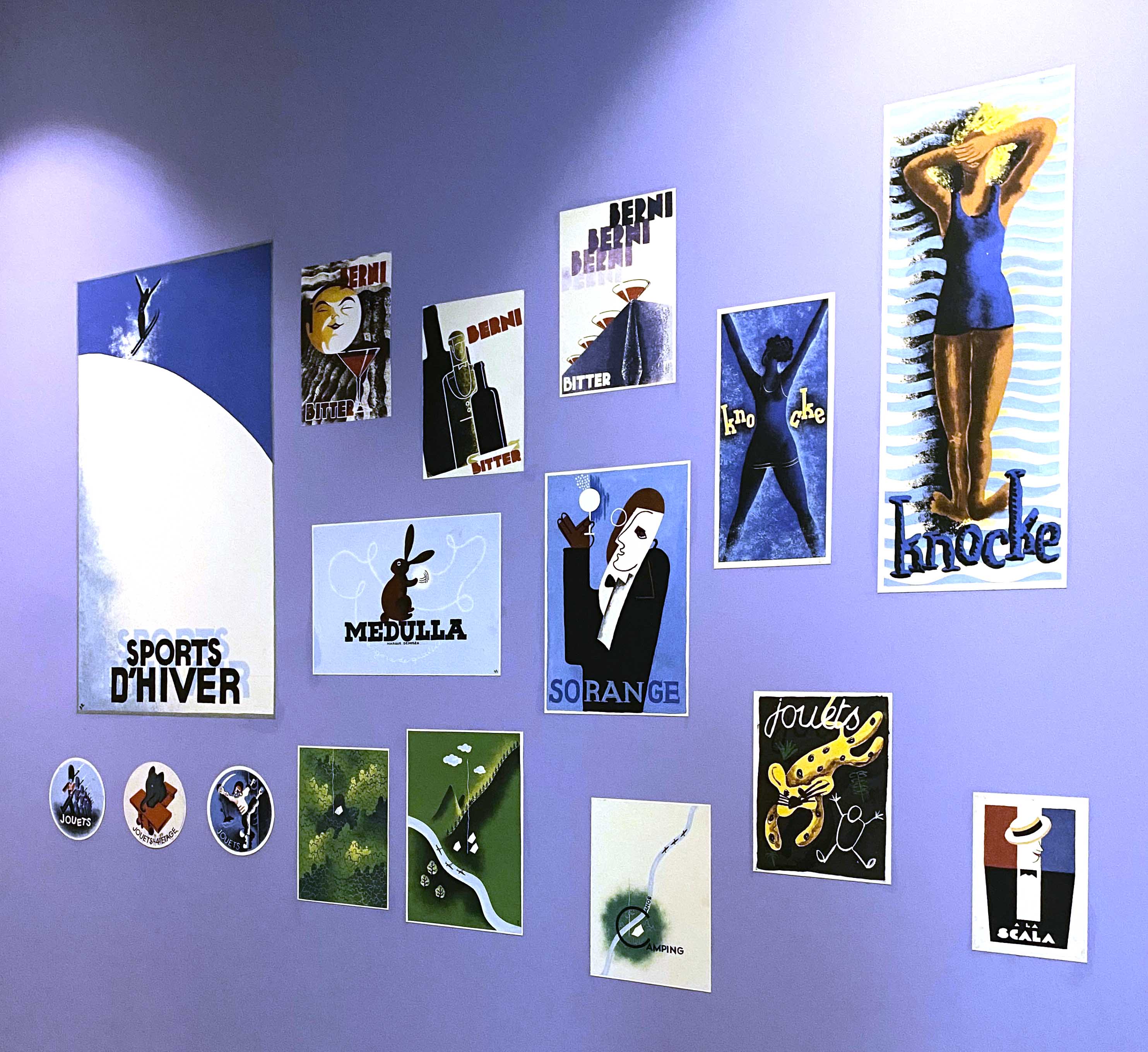Hergé Explained
Where do these posters come from, where a dragon, a swan and faces straight out of Art Deco mingle together? Yes indeed, it’s him! We all know Hergé as the creator of Tintin, born in 1929, but did you know that before becoming a master of the comic strip, he devoted much of his talent as an illustrator to… advertising!

From the late 1920s, alongside his comic strips and his role as editor of Le Petit Vingtième, Hergé also turned to posters and advertising. His clear line, his gift for lettering and his eye for graphic composition quickly won over advertisers.
Between 1927 and 1937, he produced a wide variety of works: lettering, posters, logos and full advertising campaigns for brands ranging from J. Lannoy fils tapestries (1928) to Modulophone amplifiers (1930), and the toy campaign for the Innovation department store in 1931. Connoisseurs can already recognize his distinctive style, which grew sharper over this period, and even in the jolly roundness of a Christmas poster, one can already spot Hergé’s unmistakable touch.

And guess what? For a time, Hergé actually thought of making a career in this field. Advertising was far more than a side job: it gave him the perfect ground to experiment, refine his “ligne claire” (clear lines) and let his graphic wit shine.
Buoyed by success, he founded his own studio in 1934, the Atelier Hergé, which produced advertising comics such as The Misadventures of Jef Debakker for Union briquettes (1937), or That Kindly Mr. Mops for Au Bon Marché (1931). For Innovation, he even created colorful characters to promote Drops candies and imagined a “Monster of the Scheldt,” a Belgian cousin of the famous Nessie, inspired by the wave of reports on lake monsters in the 1930s.
.jpg)
Hergé designed it serpent-like and wingless, but softened its features to appeal to children: Milou-like ears, a playful little goatee and a twinkling, good-natured expression. That sparkle in its eyes says it all: the illustrator had turned a potentially frightening beast into a jovial mascot, full of mischief and charm.
Over the years, his clean and effective line attracted major brands such as Parein biscuits, Victoria chocolates and Sorange lemonade. A brilliant body of advertising work, long unknown to the wider public, which reveals both the diversity of Hergé’s talents and the modernity of his art – well before Tintin conquered the world.
Texts and pictures © Hergé / Tintinimaginatio - 2025




 News
News Forums
Forums E-books
E-books

